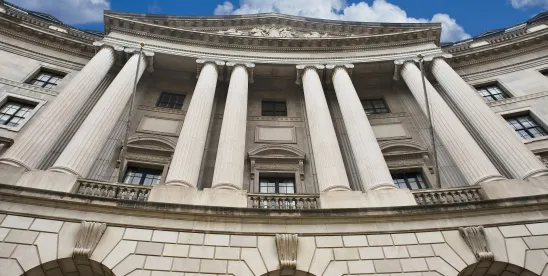Less than ten days after setting drinking water standards for six of the hundreds of chemicals known collectively as PFAS, EPA has now identified two of those PFAS that have been widely used for decades, PFOA and PFOS, as hazardous substances under CERCLA.
The media will report this as breaking news, and it is monumental but it is most certainly not a surprise. As EPA's reminds us, EPA promised to do exactly this in its PFAS road map issued in the fall of 2021. It is nothing short of extraordinary that EPA is only about six months later than it hoped in doing these things.
On April 10, EPA reported its conclusion that zero is the concentration of these PFAS in drinking water that does not present a risk to human health, so we can now expect an avalanche of CERCLA litigation over the most minute concentrations of these PFAS in water that might be a drinking water source (the enforceable drinking water limit for each of these PFAS is 4 parts per trillion).
Of course the courts have already been flooded with lawsuits alleging violations of state law and common law respecting such PFAS but we've seen only the first waves of the litigation storm that is brewing.
EPA is attempting to put at ease those who now find themselves at the point of the sword of such litigation with a guidance document explaining how it intends to exercise discretion in deciding who to sue for the PFAS affecting hundreds if not thousands of properties from coast to coast.
But some of us are old enough to have seen this movie before so we know that EPA means what it says in reciting that its guidance “is intended solely for the guidance of employees of the Agency. This policy is not a regulation and does not create new legal obligations or limit or expand obligations under any federal, state, Tribal, or local law. It is not intended to and does not create any substantive or procedural rights.”
Subject to that substantial caveat, EPA says those who don't need to worry about receiving a summons and complaint from it include “community water systems and publicly owned treatment works, municipal separate storm sewer systems, publicly owned/operated municipal solid waste landfills, publicly owned airports and local fire departments, and farms where biosolids are applied to the land.”
Of course this just means that those who don't enjoy the benefit of EPA's “discretion” will bear, at least initially, an even heavier burden.
But you can bet that those who EPA, or anyone else, chooses to pursue under CERCLA relating to PFAS in the environment will be disinclined to exercise the same discretion. And that's why the sprawling cases, with vexatious discovery, and ultimately interminable allocation proceedings, that Superfund old timers thought were a thing of the past, are also a thing of the future.
Again, none of this should be surprising given what EPA promised in October of 2021. But the remedial and litigation costs of what EPA has decided are going to be astronomical and provide a lot of work for Superfund litigators for the foreseeable future.
EPA does not intend to pursue entities where equitable factors do not support seeking response actions or costs under CERCLA, including, but not limited to, community water systems and publicly owned treatment works, municipal separate storm sewer systems, publicly owned/operated municipal solid waste landfills, publicly owned airports and local fire departments, and farms where biosolids are applied to the land. For these same parties, EPA can use CERCLA statutory authorities when appropriate to enter into settlements that provide contribution protection from third party claims for matters addressed in the settlement.




 />i
/>i
